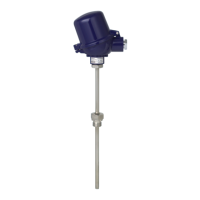WIKA operating instructions RTD and TC, intrinsically safe designs
3345267.08 06/2011 GB/D
7
GB
WARNING!
Follow the requirements of the 94/9/EC (ATEX) and IECEx directives.
Follow the respective national regulations concerning Ex-usage
(e.g. EN/IEC 60079-10 and EN/IEC 60079-14).
2.4 Special hazards
WARNING!
Observe the information given in the applicable type examination certicate and the
relevant country-specic regulations for installation and use in potentially explosive
atmospheres (e.g. EN/IEC 60079-14, NEC, CEC). Non-observance can result in
serious injury and/or damage to equipment.
For additional important safety instructions for instruments with ATEX/IECEx appro-
val, see chapter "2.3 Additional safety instructions for instruments with ATEX and
IECEx approvals".
WARNING!
For hazardous media such as oxygen, acetylene, ammable or toxic gases or liquids,
and refrigeration plants, compressors, etc., in addition to all standard regulations, the
appropriate existing codes or regulations must also be followed.
WARNING!
Protection from electrostatic discharge (ESD) required. The proper use of grounded
work surfaces and personal wrist straps is required when working with exposed
circuitry (printed circuit boards), in order to prevent static discharge from damaging
sensitive electronic components.
To ensure safe working on the instrument, the operating company must ensure
■
that suitable rst-aid equipment is available and aid is provided whenever required.
■
that the operating personnel are regularly instructed in all topics regarding work
safety, rst aid and environmental protection and know the operating instructions
and, in particular, the safety instructions contained therein.
WARNING!
Residual media in dismounted instruments can result in a risk to persons, the environ-
ment and equipment. Take sucient precautionary measures.
Do not use this instrument in safety or Emergency Stop devices. Incorrect use of the
instrument can result in injury.
Should a failure occur, aggressive media with extremely high temperature and under
high pressure or vacuum may be present at the instrument.
2. Safety

